
Discover the Magic of Hydrofoil Sailboats

Key Takeaways
- Hydrofoil sailboats blend speed, stability, and innovation for a fun sailing experience.
- Their design lifts the hull above water, reducing drag and enabling high-speed travel.
- Advanced control mechanisms maintain stability in varying wind conditions.
- Sails and hulls are meticulously engineered for optimal aerodynamics and lift.
- Ongoing innovations in foil technology continue to propel hydrofoils to new heights.
Based on their innovation and nature, the world of hydrofoil sailboats are magical, to say the least. But what exactly makes them so exceptional?
The magic of hydrofoil sailboats lies in their extraordinary speed. They can achieve remarkable speeds that were once thought impossible for sailboats. Their unrivaled stability and cutting-edge technology redefine sailing, offering a thrilling blend of innovation and performance.
Over the years, I've dedicated myself to mastering the intricacies of the yachting world, not just as an observer but as an active participant in the hydrofoil sailing community. My knowledge extends beyond the surface, encompassing the technical aspects of hydrofoil design and the thrill of high-speed sailing. As such, I’ll provide a comprehensive and engaging exploration of what sets hydrofoil sailboats apart, making them truly magical on the waters.
Table of contents

Discover the Magic of Hydrofoil Sailboats
Hydrofoils saw their early development as a concept for enhancing speed and efficiency on the water. From Alexander Graham Bell's experiments to the application of foils on sailboats in the 1950s, the quest has always been for greater speed.
But it wasn't until Russell Long championed these designs with the CEC foiling catamaran and the development of the Hobie Trifoiler that hydrofoils began to carve a distinct niche in the sailing world.
This sailboat operates on a simple yet ingenious principle: as the speed increases, the foils submerged beneath the boat generate lift. This lift thrusts the boat's hull above the water, dramatically reducing drag.
It’s similar to how air flows around the wing of an airplane, only with water's denser environment offering a different dynamic. This revolutionary foiling system allows boats to glide over waves, offering an incredibly smooth ride.
The variety of hydrofoil sailboats is astounding, from the foiling catamarans that have revolutionized the America's Cup to the twin sail trimaran designs. The fastest production sailboat, the Hobie Trifoiler , showcases what hydrofoils are capable of.
Additionally, boats like the innovative Emirates Team New Zealand vessels continue to push the boundaries of technology in competitive sailing. Whether for recreational purposes or high-speed racing, the range of hydrofoil sailboats caters to different sailing experiences and preferences.
Now, let’s explore the various aspects of hydrofoil sailboats that make them truly magical.
The Thrills of Hydrofoil Sailing
When I first stepped onto a hydrofoil sailboat, I knew that sailing would never be the same for me. Harnessing the power of the wind to achieve remarkable speeds while hovering above the water was nothing short of revolutionary.
It's an adrenaline-infused blend of sailing, flying, and innovation that promises high performance and stability with a significant reduction in wetted areas.
The allure of hydrofoiling is not just about the speed; it's the sensation of flying over the waves, defying the conventions of traditional sailing. With each gust, my hydrofoil sailboat becomes a silent, swift car, slicing through the air rather than merely sailing on the water.
When sailing with hydrofoils, you get to experience the following benefits.
- High Speed: With hydrofoils, I've seen and achieved speeds I never thought possible on water.
- Less Wetted Area: As the hydrofoils lift the hull out of the water, drag is reduced, further contributing to the craft's efficiency and speed.
- Stability: Surprisingly, the flying sensation is accompanied by stability once airborne, making the ride smoother.
The America’s Cup Competitive Foiling
Over the years, I've witnessed first-hand how hydrofoil technology has radically altered the landscape of competitive sailing. The introduction of hydrofoils has not only redefined what we consider possible in the sail area but has also brought a fresh surge of excitement to the racing circuit.
The most illustrious event in sailing, the America's Cup , underwent a transformation with the embrace of hydrofoils. Emirates Team New Zealand, a frontrunner in hydrofoil innovation, redefined the America's Cup racing in 2017.
Alongside them, the US team and Luna Rossa played pivotal roles in reshaping the landscape of America's Cup racing.
With their AC50 class catamarans soaring above the waves at top speeds that defy traditional sailing limits, they clinched the title and shifted the focus of competitive racing toward technological prowess.
The spectacle of these vessels racing is not just about the crew's capabilities but equally a testament to engineering marvels.
Also, the advent of hydrofoils in racing has certainly led to a spike in performance metrics. Here's a concise table highlighting the before and after impact of hydrofoiling in competitive Sailing:
| Aspect of Racing | Before Hydrofoiling | After Hydrofoiling |
|---|---|---|
| Top Speed | Limited by hull drag and water resistance | Drastically increased due to reduced drag |
| Crew Skills | Traditional sailing techniques | Advanced agility and dynamic sailing are required |
| Race Dynamics | Heavily dependent on wind | Enhanced control and strategy with stable wind conditions |
| Teams' Focus | Conventional sail trimming | Precision in foil control and balance |
This table illustrates just how much the racing landscape has shifted; it's not only sailing anymore.
It’s similar to piloting a high-speed aircraft, with each crew member playing a crucial role in harnessing the raw power of the strong winds in harmony with state-of-the-art technology. Watch this video for a more detailed explanation of hydrofoil sailboats and their magical power.
Technical Aspects of Hydrofoil Sailboats
In diving into the technical aspects of hydrofoil sailboats, I'll give you an insight into the intricate designs that enable these marvels to glide above the water, as well as the cutting-edge foil technology propelling them.
The design of a hydrofoil sailboat revolves around its capability to elevate the hull above the water, reducing drag and enabling high wind-speed travel. Control mechanisms are central in maintaining stability, especially when the sailboat interacts with varying wind conditions or maneuvers through shallow waters.
The hull's length and overall design are calibrated for balancing aerodynamics with hydrodynamics. In designing sails and hulls for foiling, one must carefully balance the need for power with the propensity for lift.
The sails are tailored not only to harness the wind's energy effectively but also to match the unique mechanics of a vessel in flight. Meticulous engineering ensures that the sail configuration works in harmony with the foils to propel the sailboat forward swiftly.
Additionally, the foil technology, which is pivotal to modern hydrofoils, has undergone significant further development over the years . From the materials used to the manufacturing processes, every element incorporates the latest in technology to yield extreme performance.
Advancements have led to foils that can automatically adjust to sailing conditions and speed, which is instrumental for achieving and maintaining high speeds.
Currently, the future of hydrofoil technology seems bound for even further breakthroughs. Customization and refinement of foils for specific water conditions, such as the challenges posed by shallow water, are ongoing.
Each new iteration builds upon the last, consistently advancing the field and informing the next leap in hydrofoil sailing. This persistent innovation in foil and hull technology is a testament to the potential that lies ahead for hydrofoil sailboats.
Are Hydrofoil Sailboats the Right Options for You?
Hydrofoil sailboats offer a unique and thrilling sailing experience, but whether they are the right option depends on your preferences and goals. These high-performance vessels are known for their exceptional speed and stability, making them ideal for thrill-seekers and competitive sailors.
If you're passionate about cutting-edge technology and want to push the boundaries of traditional sailing, hydrofoil sailboats could be a perfect fit.
However, they may require a learning curve for beginners and are typically more expensive than traditional sailboats.
Consider your skill level, budget, and desire for speed and innovation when deciding if hydrofoil sailboats align with your sailing aspirations.
The Future of Hydrofoil Sailboats and Their Transformative Potential
Over the years, I've been captivated by the evolution of sailing and the recent advancements in hydrofoil technology, which promise a thrilling future for these marine crafts.
The technology supporting hydrofoil sailboats is rapidly advancing, bringing us closer to a world where boats gliding above the water's surface is a common sight.
These boats use 'wings' or foils submerged in water to lift the hull above the surface, reducing drag and allowing for greater speeds. This innovation is not just limited to racing but is expected to influence recreational and transport vessels in the future.
Today, we see hydrofoils in action with hydrofoil kiteboards, which have become popular among thrill-seekers. This is due to their ability to harness wind power and achieve impressive acceleration and agility on the water. This same principle is being applied to larger sailing vessels, where performance and sustainability converge.
The further development of hydrofoil technology involves intensive research into materials and design optimizations that can handle the challenges of varied sea conditions.
Electric and solar-powered hydrofoils are on the horizon, poised to significantly impact our world by offering greener alternatives to traditional boats.
Notably, the trends in hydrofoiling indicate a shift towards more sustainable sailing, utilizing advancements in electric propulsion systems to complement the inherent energy efficiency of hydrofoil designs.
The goal is a fleet of sailboats that are not just faster but more eco-friendly, promising an exciting future where the joy of sailing is in harmony with the health of our oceans.
Related Articles
Daniel Wade
I've personally had thousands of questions about sailing and sailboats over the years. As I learn and experience sailing, and the community, I share the answers that work and make sense to me, here on Life of Sailing.
by this author
Learn About Sailboats
Most Recent

Affordable Sailboats You Can Build at Home
September 13, 2023

Best Small Sailboat Ornaments
September 12, 2023
Important Legal Info
Lifeofsailing.com is a participant in the Amazon Services LLC Associates Program, an affiliate advertising program designed to provide a means for sites to earn advertising fees by advertising and linking to Amazon. This site also participates in other affiliate programs and is compensated for referring traffic and business to these companies.
Similar Posts

Hunter Sailboats: Are They Built for Bluewater Cruising?
August 29, 2023

What Is A Furler On A Sailboat?
August 22, 2023

What Is Sail Roach?
August 15, 2023
Popular Posts

Best Liveaboard Catamaran Sailboats
December 28, 2023

Can a Novice Sail Around the World?
Elizabeth O'Malley
June 15, 2022

4 Best Electric Outboard Motors

How Long Did It Take The Vikings To Sail To England?

10 Best Sailboat Brands (And Why)
December 20, 2023

7 Best Places To Liveaboard A Sailboat
Get the best sailing content.
Top Rated Posts
© 2024 Life of Sailing Email: [email protected] Address: 11816 Inwood Rd #3024 Dallas, TX 75244 Disclaimer Privacy Policy
- BOAT OF THE YEAR
- Newsletters
- Sailboat Reviews
- Boating Safety
- Sails and Rigging
- Maintenance
- Sailing Totem
- Sailor & Galley
- Living Aboard
- Destinations
- Gear & Electronics
- Charter Resources
- Ultimate Boating Giveaway

Hydrofoils for Sailboats
- By By Steven Callahan
- Updated: July 29, 2020
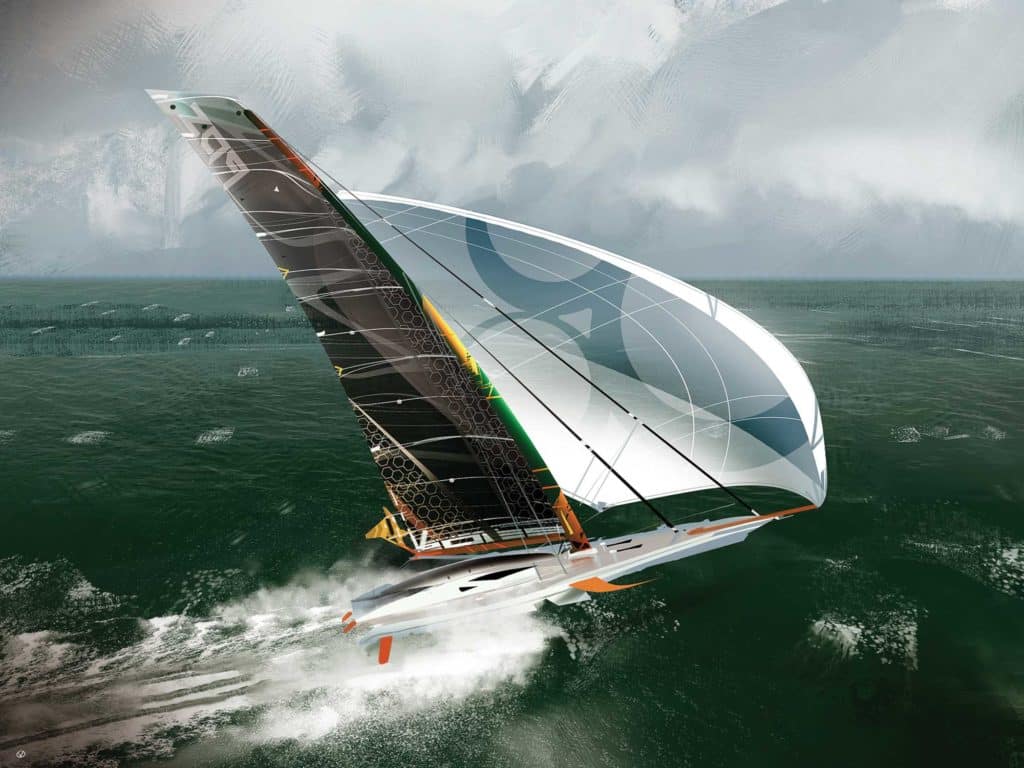
Hydrofoils have been providing dynamic lift since fish sprouted fins. And people have been employing foils ever since they first put paddle to water, and certainly since adding keels and rudders to boats. But the modern, flying America’s Cup boats, kiteboards, Moth dinghies, shorthanded offshore thoroughbreds—these are all playing in a new world in which the terms “hydrofoils” or “lifting foils” describe those oriented to raise a hull or hulls from the water. In these racing realms, if you ain’t got foils, you ain’t got nothin’.
Lifting foils that allow these boats to sometimes home in on three times the wind speed might appear to be of little interest to cruising sailors, but with such common cruising features as self-steering and autopilots, self-tailing winches, rope clutches, fin keels and faster hull shapes all having been passed down from the racing scene, one must ask, “What promise, if any, do hydrofoils hold?”
Lifted or partially lifted boat patents extend back to 1869, but workable watercraft took roots along with early flight. Italian Enrico Forlanini began experimenting with foils in 1898. In 1906, his 1-ton 60 hp foiler reached 42.5 mph. Alexander Graham Bell’s HD-4 Hydrodrome flew on Bras d’ Or Lake at 70 mph in 1919. And several sailing foiler patents began appearing in the 1950s. Notably, JG Baker’s 26-foot monohull, Monitor, flew at 30-plus mph in 1955. Baker experimented with a number of foil configurations, and at least built, if not used, the first wing mast. The first offshore foiler was likely David Keiper’s flying trimaran, Williwaw , in which he crisscrossed the Pacific in the 1960s.
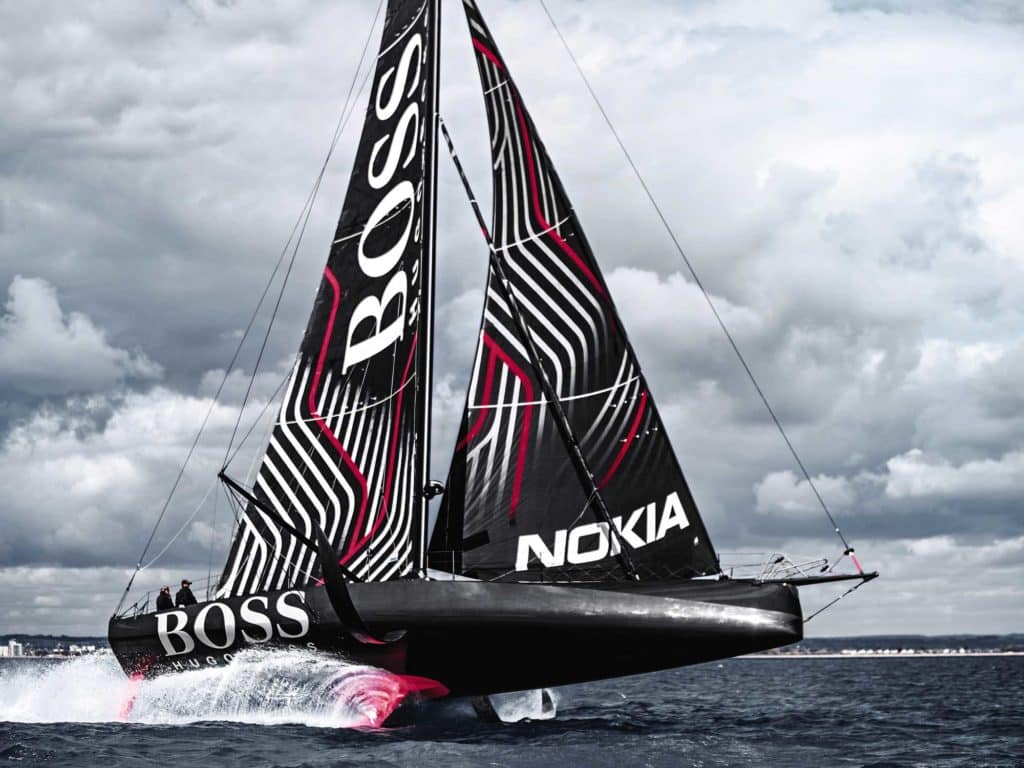
By the 1980s, numerous speed-trial and foil-enhanced offshore-racing multihulls showed huge promise, and have since evolved into behemoth trimarans clocking 30 to 40 knots continuously for long periods, not to mention the monohulls in the Vendée Globe (and soon the Ocean Race) that are capable of speeds exceeding 30 knots. But as boat designer Rodger Martin once reminded me, “If you want a new idea, look in an old book.” He was right. The fully foiling monohulls that will compete in the 2021 America’s Cup will bring things back full circle to the foiling monohull Monitor .
Fluid Dynamics Primer
Any foil—a wing, sail, keel, rudder or lifting foil—redirects the flow of fluid (air included), creating high- and low-pressure areas on opposite sides of the appendage, while developing lift perpendicular to the foil’s surface.
Advancements in foiling science is due in part to the hundreds of foil shapes that were tested, with tabulated results, by the National Advisory Committee for Aeronautics, the forerunner of the National Aeronautics and Space Administration. For the better part of a century now, aircraft and boat designers have been able to choose from a spectrum of refined foil sections that produce predictable amounts of lift and drag for known speeds of fluid and angles of attack, or the angle at which the foil passes through the fluid. Sections of efficient faster foils, as seen on jets or as we flatten our sails to go upwind or reach high speeds, have smaller nose radii and are thinner, with the thickest section of the foils farther aft, up to nearly halfway toward the trailing edge.
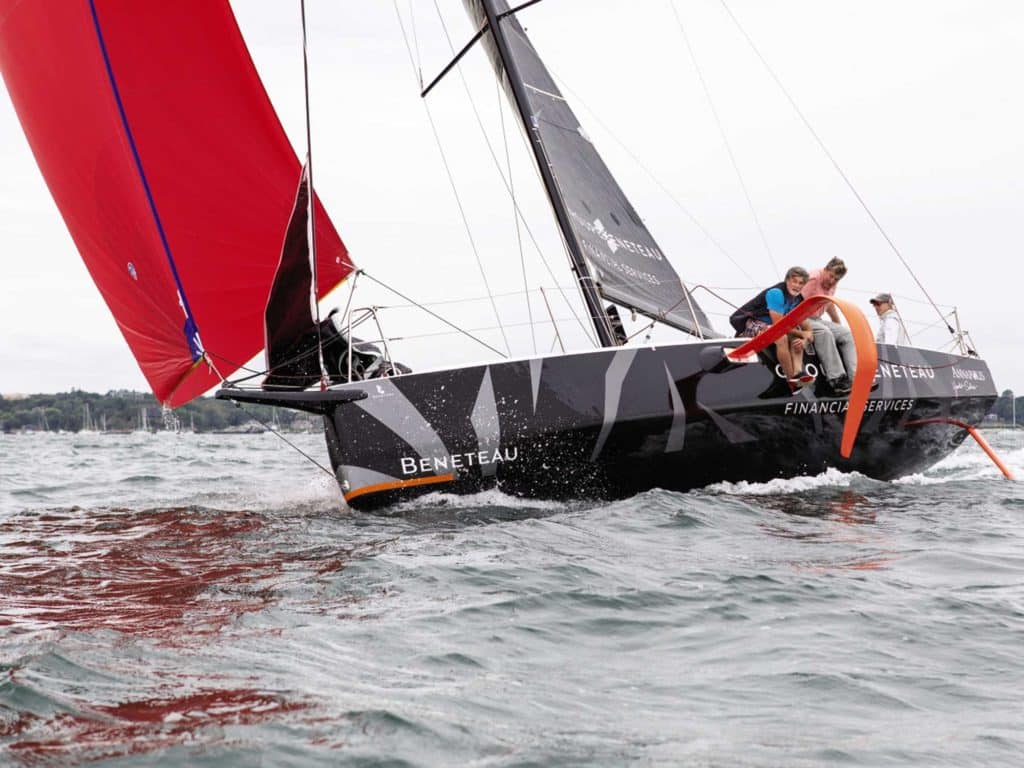
The most efficient foil sections at slow speeds are fatter, with the maximum thickness farther forward, and with larger nose radii, than faster foils. The angle to fluid flow or angle of attack also is greater. We see these slower foils on wings of prop planes and sails when off the wind or in light conditions.
Most sailors are familiar with traditional foils on boats, the teardrop sections of keels that produce lift to weather, reducing leeway, and of rudders, allowing them to steer. Even a flat plate can be a foil, but these tend to be inefficient. Such a shape is prone to fluid separation from the surface, meaning they stall easily, and they maintain poor lift-to-drag ratios. Even keels and rudders are somewhat lift-compromised because they are symmetrical and have to work with fluid coming from either side, whereas lifting foils are more like aircraft wings or propellers, with asymmetrical sections honed for performance in a more stable, fluid flow.
The point is, any foil can be employed at various angles to the surface to prevent leeway, produce increased stability, or help lift the boat out of the water. But those not required to work with fluid flowing from opposite sides can then be honed to maximize lift and minimize drag. Asymmetrical foils were used on boats like Bruce King’s bilgeboarders, including Hawkeye , back in the 1970s. And, designers, including Olin Stephens, had previously employed trim tabs behind keels to improve keel performance.
Sails, which are heeled airfoils, not only drive the boat forward, but they also produce downforce, actually increasing the dynamic displacement of the boat. To counter this and keep the boat sailing more upright, multihull designer Dick Newick first employed slanted asymmetrical hydrofoils in the outer hulls of his small charter trimaran, Lark , in 1962. A portion of the lift developed by the hydrofoil resisted leeway, while a portion worked to actually lift the leeward hull, keeping the boat more upright and reducing dynamic displacement and drag.
Anyone who has ridden on even a foil-stabilized boat will know how riding at least lightly on the waves, and especially above them, beats smashing through them. When boats lift off, everything gets a lot smoother, drag falls away, and the boat accelerates.
Cruising on Foils
But why would a cruiser want to whip over the sea? Wouldn’t this demand an inordinate amount of attention by the crew? Would lifting foils even be applicable to a boat that must have substantial displacement to carry crew and stores? Aren’t cruising-boat hydrofoils an oxymoron?
Maybe, but I believe our boats’ hulls are likely to sprout fins much as fish have as we orient foils to more efficiently resist leeway, add stability, aid steering, reduce drag, increase comfort, allow for shallower draft, and enhance wider variations in hull shapes.
Boats have gotten increasingly wide through the years to advance form stability, improve performance (primarily off the wind), and boost interior volume. But the downside is that fat boats tend to slam more upwind. What if you could reduce dynamic displacement of the boat and lift that hull even partially from the water? The result would be less slamming, especially upwind.
At the same time, what about narrower boats that are known for being more seakindly, especially when closehauled, but lack form stability to carry adequate sail area for powering upwind, and tend to roll badly downwind? Or shallow-draft vessels that are lovely for cruising, but again, tend to suffer from reduced stability? Foils can give that stability back.
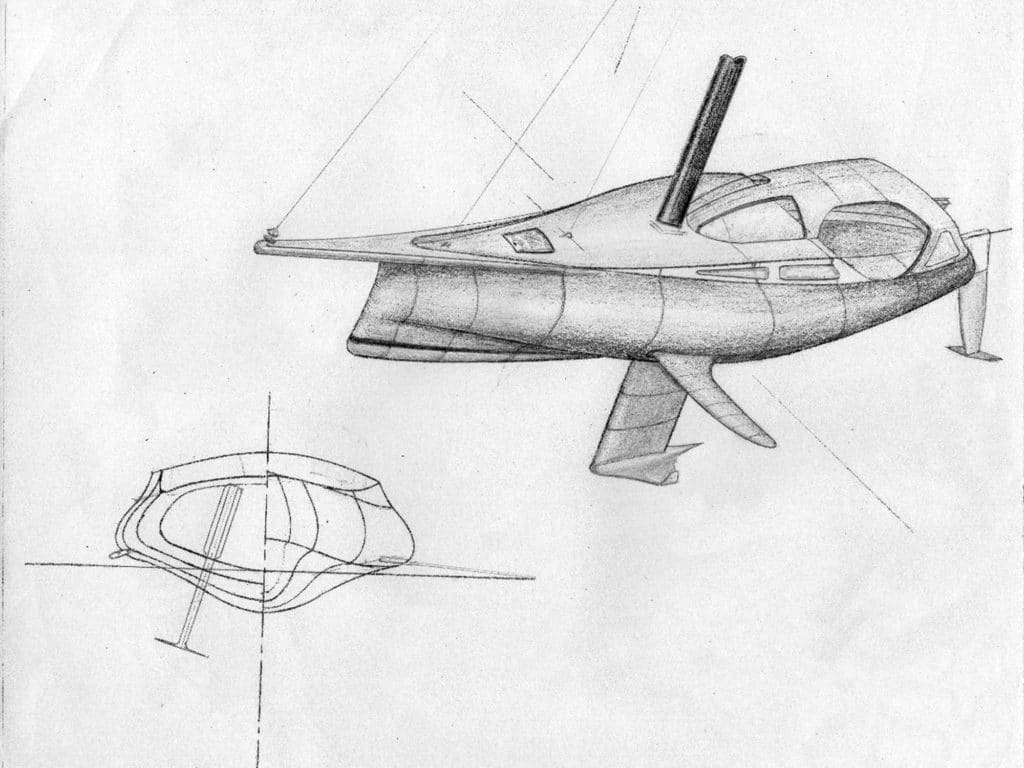
Looking ahead, boat designers might choose to reduce ballast, making up for it with a foil. In short, lifting foils can reduce boat drag and motion while increasing power and performance.
Pitching also does no favors for speed or crew comfort. Foils can come into play here as well. Foils parallel to the sea’s surface resist motion up and down, and a lifted boat skating above chop also is less prone to hobby-horsing through waves. Multihulls have always been particularly susceptible to pitching for a number of reasons, but watching videos of multihulls sailing to weather show an obvious huge advantage that foilers have compared with nonfoilers. Offshore multihulls now routinely employ T-foils on the rudders to control the fore and aft angles of the boat (attitude), a feature easily adaptable to any vessel.
OK, so what’s the cost? Obviously, the more things sticking through the hull, especially if they are retractable, the more it’s going to impact the interior. There would be added weight, complexity and cost. Foils also create noise, and there’s susceptibility to damage from hitting stuff. And let’s not forget compromises with shapes, purposes and things not yet imagined.
As for damage, it’s possible to fold the foils back into the hull. Think swinging center- boards or actual fish fins. Daggerboardlike foils can at least employ shock-absorbing systems similar to the daggerboard arrangements found in many multihulls. This includes weak links that are outside the hull, so if a foil is struck, it frees the foil to fold back or to come off before being destroyed or damaging the hull. Or, foils might hang from the deck rather than penetrating the hull, allowing them to kick up (and to be retrofitted to existing boats). These configurations also relieve the interior of intrusions, and keep the noise more removed from it. I have no doubt that numerous talented designers will be exploring all kinds of options and compromises in coming years, finding ways to make foils both practical and more than worth the compromises.
Sailing more upright, shallower draft, speed, comfort—what’s not to like? Just what is possible? I have a feeling the cruising community is about to find out.
Steven Callahan is a multihull aficionado, boat designer and the author of Adrift , an account of his 76 days spent in a life raft across the Atlantic.
- More: foils , How To , hydrofoils , print june july 2020 , sailboat design
- More How To

Grease the Wheels of Your Boat: A Guide to Proper Lubrication

A Bowsprit Reborn: A DIY Renovation Story

Rigging Redo: Our Switch to Synthetic

Top Tools for Sailboat Cruising: Must-Have Gear for 2024

Galápagos: A Paradise Worth the Paperwork

Around Alone

- Digital Edition
- Customer Service
- Privacy Policy
- Terms of Use
- Email Newsletters
- Cruising World
- Sailing World
- Salt Water Sportsman
- Sport Fishing
- Wakeboarding
Foiling 101
The F101 takes you through your foiling journey, providing a progression pathway from the beginner foiler to the Olympian. F101 sets new challenges and goals at whatever level you come in, from expert to beginner.
The F101 is an all-new foiling trimaran aimed specifically at those sailors that, for whatever reason, thought foiling was too difficult for them. The concept originates from the experience of teaching many people to foil in the International Moth class and addressing the main barriers they faced. So we set about creating a new boat without the design restrictions of a box rule – in this way, foiling has been made easier.
“The boats are great fun and I was foiling after about 10 minutes on the first day and having extended periods of foiling after day 2. Not having sailed dinghies for the better part of 20 years, I never really expected to foil, so the boats are fulfilling their designed purpose beautifully. ” — Pete Selby
As an F101 owner, you get access to all of this knowledge and experience, plus access to the F101 Tribe.
The F101 Tribe is an exclusive social media channel that only owners can access, share experiences, tips, and events and generally have a fun time with foiling at the heart of the journey. It is like having a 24/7 help desk..someone, somewhere in the World, is normally awake to help!
The ethos of Foiling World and the F101 TRIBE is to:
· Sail a Fun boat
· Sail with great friends
· Sail in great locations
The F101…more than just a boat! We guarantee to get you foiling, wherever you are in the world, as remote as you like. If you buy an F101, you will FOIL! GUARANTEED!
Whatever your chosen medium, whether it’s a phone, email, text or WhatsApp, we will get back to you!
You can find our phone number and email over on the right-hand side of this page. What are you waiting for?
Few companies give you direct access to this amount of experience, not just before purchasing a boat but throughout your foiling journey.
Got a question? Looking to become an F101 Tribe member? We’d love to hear from you! Contact us .
- AROUND THE SAILING WORLD
- BOAT OF THE YEAR
- Email Newsletters
- America’s Cup
- St. Petersburg
- Caribbean Championship
- Boating Safety
- Ultimate Boating Giveaway

Boat of the Year 2020 F101: Best Foiler
- By Dave Reed
- Updated: December 10, 2019
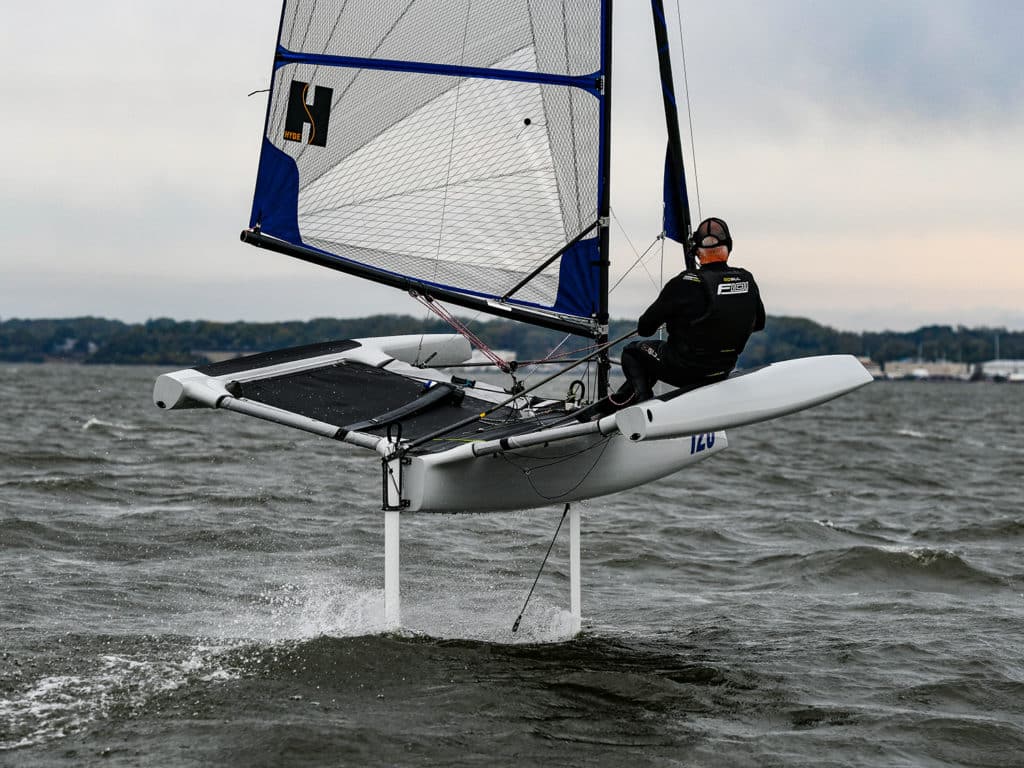
At A Glance
Price As Sailed: $24,750
Design Purpose: Learn to foil, advance skills
Crew List: One or two
Rob Andrews and his business partner Alan Hillman have been teaching foiling for a few years now, and one thing they’ve learned is we get better by sailing, not by swimming. Thus was the genesis of the F101, a craft with which they could teach the fundamentals of foiling—without the crash and burn. But it’s not just a learn-to-foil boat, either. It’s a platform with which new and experienced converts alike can take their foiling skill set to a higher level.
The key to mastering the F101, Andrews explains, is grasping righting moment. With the trimaran platform, you get plenty of it, as well as a stable boat that’s more forgiving than any other small foiler. “The trimaran configuration gives you righting moment direct from the foil in the middle hull,” he says, “and gives a measure of safety. It’s hard to capsize the boat.”
The judges learn as much when it comes time to sail the F101. In 15 knots and more, and a steep Chesapeake chop, Powlison is first to give it a go. He settles into the boat, gets his bearings, perches skittishly on the weather hull, sheets on the mainsail (no need to use the boat’s gennaker above 12 knots) and off he goes like a bat out of hell, popping up on the foils without even trying.
“The trick is getting used to the sensation of heeling to windward,” he says. “It takes a bit of trust. Once foiling, it’s quiet and fast, and I felt like I had to be really active on the mainsheet to keep it on the foils.”
That’s true of any foiler, but the beauty of the F101, the judges agree, is when you do lose it, it’s no big deal. The boat drops off its foils, the bows auger in and you get a face full of water; but just reset, bear away and try again.
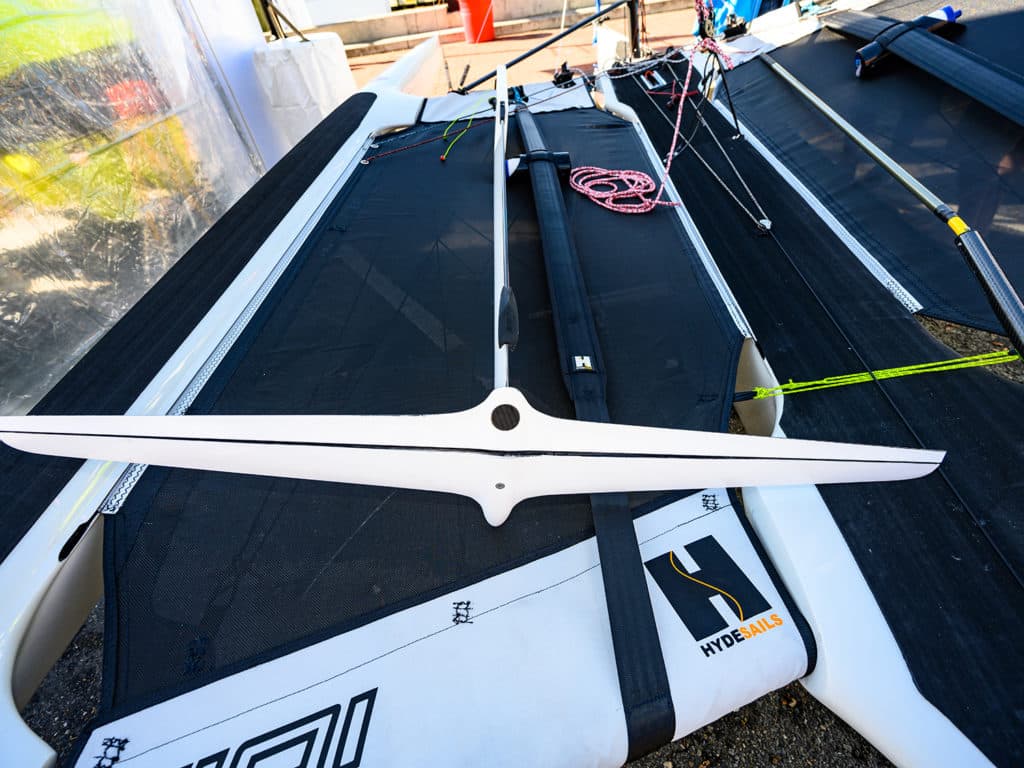
“The hull shape picks up the buoyancy gently,” Stewart says, “which makes it depress smoothly and prevents it from pitchpoling. When I dumped it a few times I thought I was going in, but not a chance. You quickly realize there’s plenty of floatation there to save you. In flat water, with one day of training you’d get up to speed quickly.”
When teaching people to foil, Hillman starts with “skimming,” a ride height barely above the surface. As the sailor becomes more accustomed to how the boat behaves, there’s a simple line adjustment at the foil head: Dial it up one setting and increase your ride height.
As you’re sailing, the foil wand hanging behind the trailing edge effectively feels where the boat is riding relative to the water and actuates the main flap. In light winds, it gives you more lift, and the boat pops up on the foil. Get too high, and the wand drops down even further, forcing negative lift on the flap, which brings you back down to your desired height and prevents the foils from breaking the surface.
In terms of construction, the judges praise its carbon-and-epoxy build quality and the all-up weight of 180 pounds, which makes it easy to get to and from the water. With the F101 sitting on its dolly in the boat park, going sailing is as simple as pulling back the covers, hoisting the main and launching from a dock, beach or boat ramp with minimal fuss.
“What I like about it is that it’s one of those boats that you buy and don’t need to add anything to it,” Allen says. “There’s nothing to change out or upgrade.”
For simplicity, the boat is set up with adjustments that let you ratchet up the experience as you climb the learning curve. On the rudder foil, for example, there is a clear numbering system so that as you twist the tiller extension, you change the rudder rake. The baseline setting is zero, and it’s the same for the main foil. The only thing left is to balance the forces with the mainsheet.
“When I first got up on the foils, I was thinking to myself, ‘This is too easy; I should be working harder,’ ” Powlison says. “As they said, this boat solves a lot of the problems associated with other foiling dinghies. It’s a great high-performance boat that represents the next step in making foiling accessible to the public.”
See All Winners
Other Winners:
- 2020 Boat of the Year
- Best Crossover
- Best Multihull
- Best Foiler
- Best Dinghy
- More: BOTY , boty 2020 , foils , Sailboats
- More Sailboats
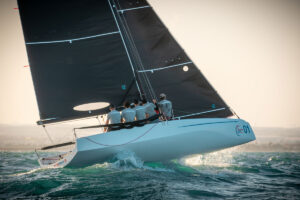
Sporty and Simple is the ClubSwan 28

Nautor Swan Has A New Pocket Rocket

Pogo Launches its Latest Coastal Rocket

A Deeper Dive Into the Storm 18
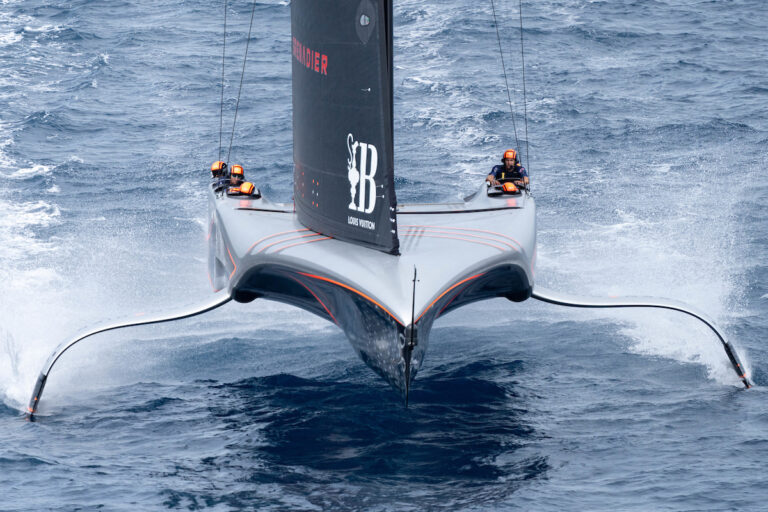
Barcelona Breeze Increase Spikes Intensity

Luna Rossa Dominant on Busy Day in Barcelona
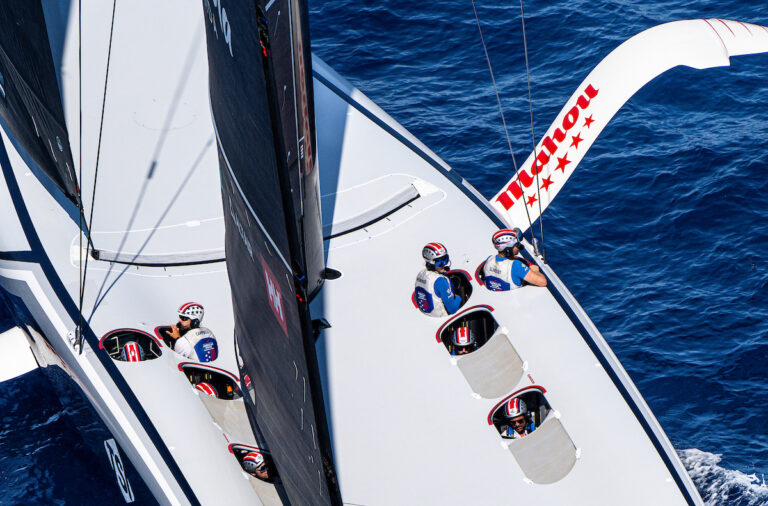
One and Done on Drifter Day of Cup Challenger Series
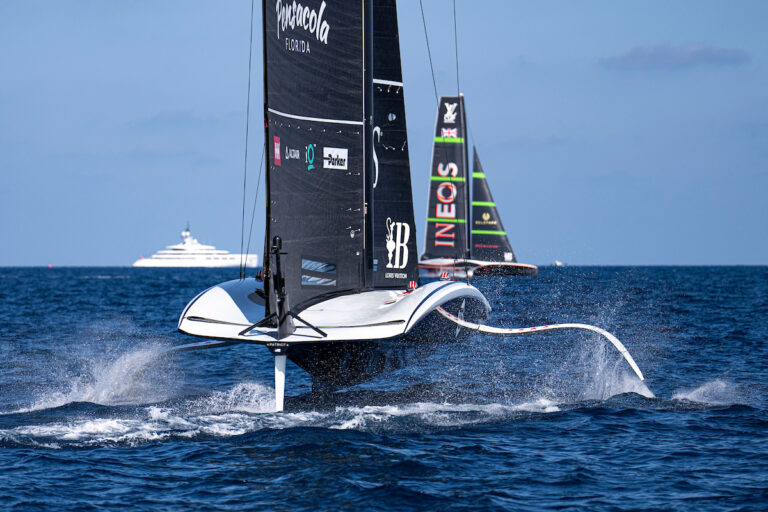
Shocks and Drops At Louis Vuitton Cup Start

- Digital Edition
- Customer Service
- Privacy Policy
- Terms of Use
- Cruising World
- Sailing World
- Salt Water Sportsman
- Sport Fishing
- Wakeboarding
Hydrofoil Sailing
Boats That Fly
Site Navigation [Skip]
- Latest Updates

Sidebar [Skip]
Subscribe to RSS feed
Windrider Rave
http://www.windrider.com/rave.shtml
The Windrider Rave is a production rotomolded hydrofoil trimaran. It was designed by Dr. Sam Bradfield who previously held speed records with nf 2 (neither fish nor fowl).
Last update: February 2008

The Fresnel Hydrofoil Trimaran is a futuristic sailboat
By Adrian Prisca
Updated on August 31, 2017
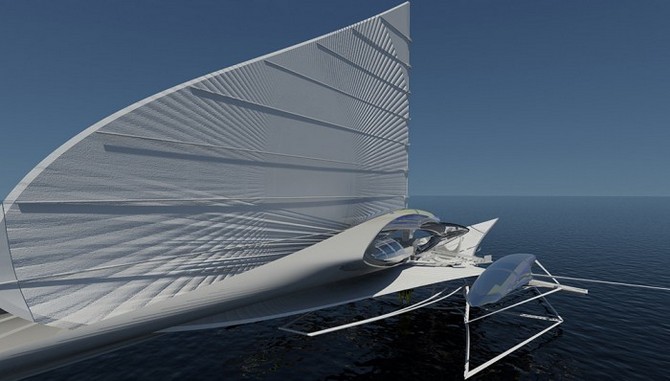
Penned down by London-based architect Margot Krasojević, the Fresnel Hydrofoil Trimaran looks like a mesmerizing sailboat of the future, with an astonishing shape and a unique electric propulsion system that’s years beyond the diesel/electric hybrid engines used on the most amazing hybrid yachts nowadays.
The Fresnel sailboat could be a waterbone perpetual-motion machine, because it could basically go on forever as long as it’s sunny or windy outside, with zero emissions and no fuel costs. When there’s no wind, three electric motors, one in each hull, will power the boat from the onboard banks of batteries, that are charged through solar and wind power.
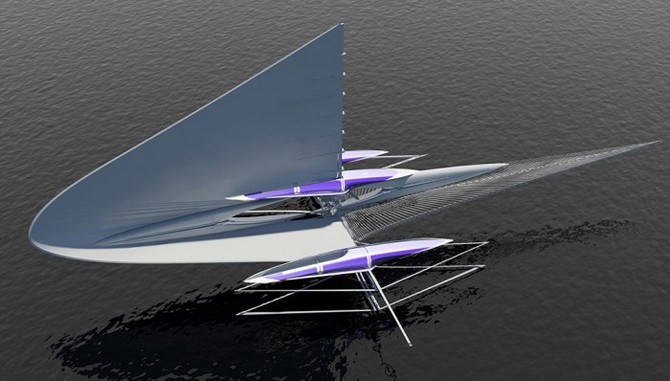
With this 100 percent green propulsion system this futuristic sailboat should be able to deliver the same speed and performances as if the boat would run on fuel. The yacht has been designed both with long distance cruising and racing in mind, with a carbon fiber sail that’s more like an aircraft wing than a traditional sail.
This will help this sailing yacht perform really well even in the lightest of breezes and when it’s in trimaran mode, the yacht should be able to reach a top speed of 40 knots. If you want even more speed the vessel could lift up onto hydrofoils that will increase the top speed even further.
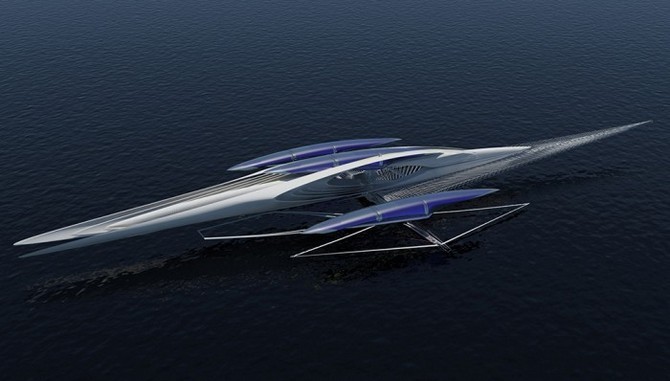
In cruising mode the Fresnel sailboat will turn into a monohull and on battery power alone it could cruise at speeds of up to 15 knots. The batteries are charged through lenses, solar panels and holographic film that’s everywhere on the sailboat, even in the interior of the main cabin.
You might think that the Fresnel Hydrofoil Trimaran is years away but the construction of the first high tech sailboat like this one is scheduled to begin this summer, which means we’ll see this beauty on the high seas pretty soon. It should cost around $15 million to build and I’m pretty sure that it will receive a lot of interest when it’s ready!
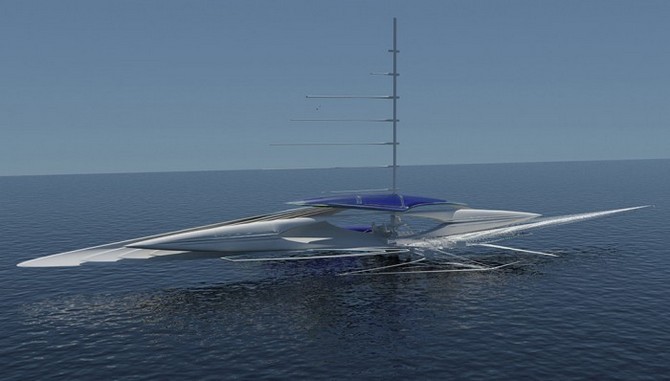
[RobbReport]

About Adrian Prisca
Founder of Luxatic and countless other projects, Adrian has shaped this website into a go-to source for discerning readers looking for the latest in luxury products and experiences. He has over 15 years of experience in creating, managing and publishing lifestyle content across numerous platforms and he’s considered a leading voice in the luxury industry. Learn more about Luxatic's Editorial Process .
Leave a Comment
More from luxatic.
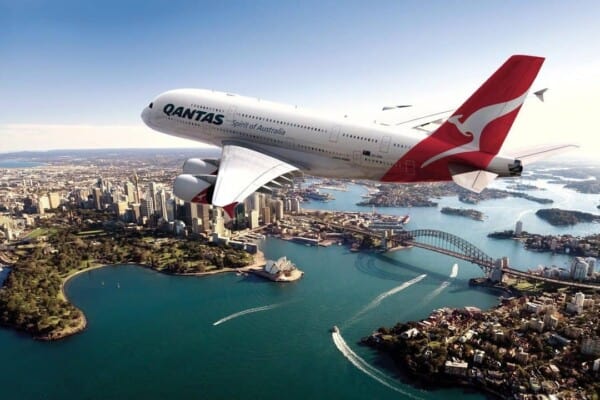
The 20 Best Airlines in the World Right Now

These are The 15 Fastest Planes of All Time
By Thom Esveld

24 Incredible Celebrity Yachts You Will Surely Love
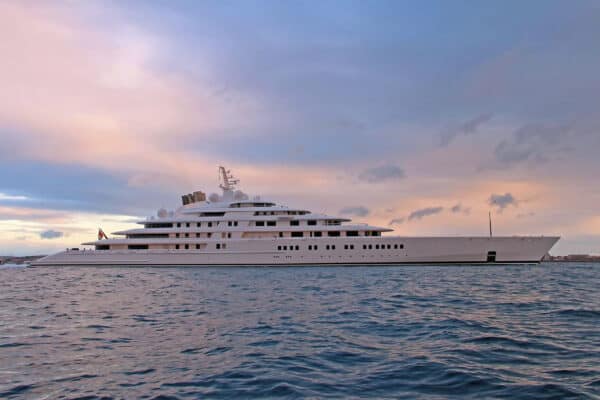
These Are The 25 Biggest Yachts in the World!
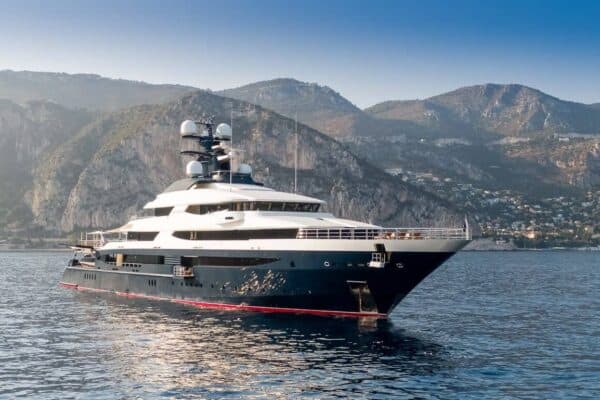
20 Largest Explorer Yachts in the World
By Alex Holmes
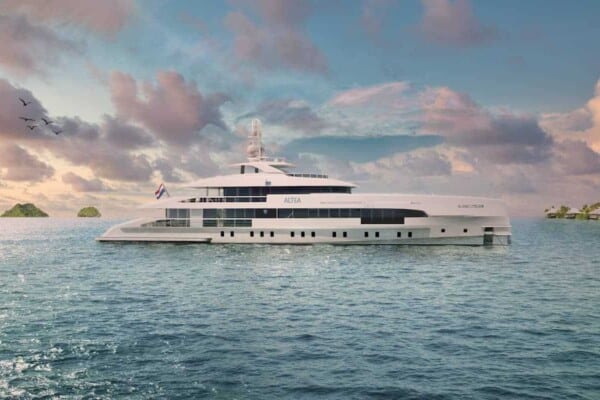
Best Luxury Yacht Brands: 25 Shipyards Which Build The Best Superyachts
By Brody Patterson

The 15 Best Personal Submarines For Superyacht Owners
By Victor Baker

The Longest & Shortest Runways in the World!

The 15 Biggest Planes in the World
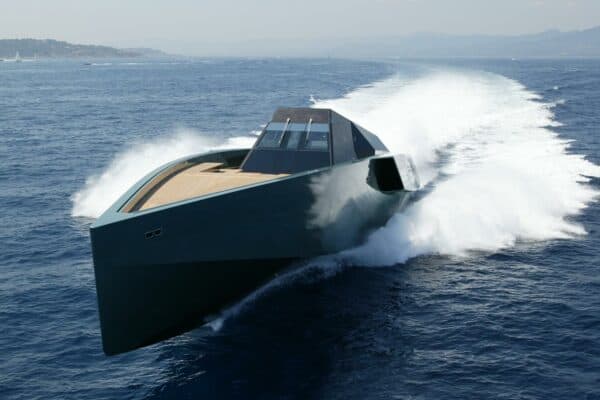
The 20 Fastest SuperYachts in the World

Sailing in Style: The World’s Most Beautiful Yacht Charter Destinations

The 15 Best Small Planes That You Can Buy Right Now
- THE PRINCESS PASSPORT
- Email Newsletter
- Yacht Walkthroughs
- Destinations
- Electronics
- Boating Safety
- Ultimate Boating Giveaway

Sailing’s Hydrofoiling Revolution
- By Herb McCormick
- January 18, 2023
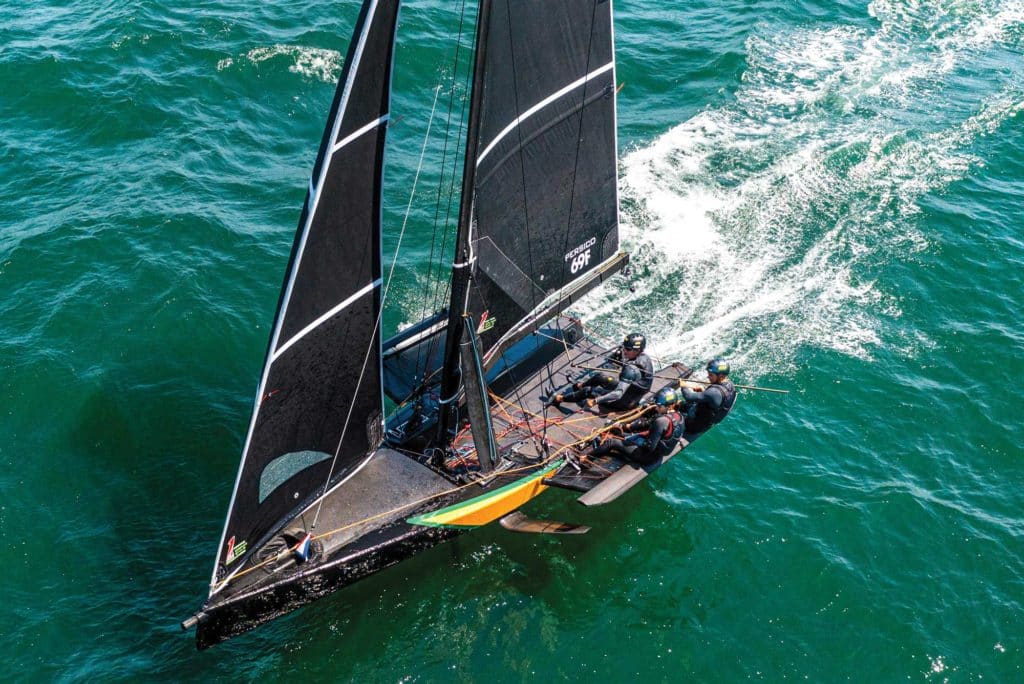
There’s a revolution underway in the sport of sailing, and it can be summed up in one simple word: foiling.
More specifically, we’re talking about hydrofoils , the winglike appendages mounted beneath the hull of a vessel that, at a certain speed, lift the hull clear of the water. When this happens, the foiling sailboats can reach speeds two or even three times faster than possible in “displacement” mode.
And sailboats are just one element of the foiling revolution: Surfboards, paddleboards and powerboats are also getting in on the act.
An Italian naval architect named Enrico Forlanini is credited with developing the first waterborne hydrofoils, which he affixed to a 60 hp, airscrew-driven craft that topped off at 36.9 knots back in 1906. In the century that followed, a series of would-be inventors took a swing at the concept with varying degrees of success. Foiling sailboats finally ascended into the mainstream during the 2013 America’s Cup, when Oracle Team USA beat Emirates Team New Zealand in a match between foiling 72-foot catamarans (the Cup has been contested in foiling cats ever since).
Surprisingly enough, my first foiling experience happened some three decades ago, aboard something called a Hobie TriFoiler, from the popular manufacturer of Hobie surfboards, beach cats and kayaks. The TriFoiler, basically a 22-foot trimaran with a central pod and a pair of mainsails stepped on the twin outriggers, was invented by a fanatical California engineer named Greg Ketterman. The sail controls were laid out just forward of the tiny airplane-style cockpit; you steered with foot pedals. It was so ridiculously easy that even a gremmie like me had the thing foiling within moments of getting in and reaching off.
But after the initial thrill, it was actually kind of boring. Which, I believe, is why it went out of production soon after. The TriFoiler was, unfortunately, way ahead of its time.
Such was the extent of my personal foiling experience until this past summer, when a new class of foiling monohull skiffs called Persico 69Fs rolled into my home waters for a series of races among youth squads in the class’s inaugural season. I got an invitation to take a spin.
After donning my helmet, wetsuit and life jacket, I was handed the helm with a pair of skilled young sailors on board. At 25 knots, we were towed into Narragansett Bay behind a powerful RIB, foiling all the way. It was terrifying. And a preview of coming attractions.
Once the tow dropped us, the sails went up and we bore off. I skied the tiller extension while scrambling out onto the hiking racks. Which sent us off on a screaming reach. Which flipped the 22-foot-7-inch carbon rocket ship.
Twenty seconds into foiling, and I’d capsized the bloody thing. How embarrassing.
The kids, bless them, were kind and patient. We got the whole shooting match, including ourselves, back upright and tried again. The mainsail trimmer sheeted it home, we started to accelerate, and he said: “Here we go! You’re up. You’re flying!” Indeed, we were.
Hard on the breeze in the 12-knot southwesterly, things unfolded quickly. Spray was flying, and I took more than one solid wave to the kisser. I was mostly too frightened to concentrate on anything but driving, but I did glance at the speedo once: 17.4 knots. (I felt pretty chuffed until later learning a 69F’s top speed is 34 knots. Ugh.)
However, I guess I’d proved the point: With a couple of sailors who know what they’re doing, foiling is for everyone. From now on, just call me Mr. Foiler.
- More: Foils , Hydrofoil Boats , Hydrofoiler , November 2022 , Sailboats , Sailing Yachts , Yachts
- More Yachts

Top Nine Fishing Tenders For 2024

First Look: Meet the Apreamare 88 Motoryacht Flagship

Holterman Shipyard Debuts Xtreme X-65

Unveiling the Tiara Yachts EX 54: A Comprehensive Review

Unforgettable Caribbean Voyage: Sailing Through St. Maarten and Dominica

Next-Level Cruising: 2022 Palm Beach PB70 For Sale

For Sale: 2014 Sabre 42 Salon Express

- Digital Edition
- Customer Service
- Privacy Policy
- Terms of Use
- Email Newsletters
- Cruising World
- Sailing World
- Salt Water Sportsman
- Sport Fishing
- Wakeboarding
Yachting World
- Digital Edition

Foiling: the history of the hydrofoiler
- Matthew Sheahan
- December 9, 2021
Foiling has taken the watersports world by storm in recent years, but the history of the hydrofoiler goes back further than you might think

The biggest revolution to hit watersports in general has been foiling , and it’s easy to view the use of hydrofoils as a relatively recent phenomenon.
In truth, although foiling has really taken off (if you’ll forgive the pun) in recent years in everything from surfing to sailing, paddleboarding , and beyond, the history of the hydrofoil goes back far further than many might assume.
The world of powered foilers kicked things off early but even sail-powered foiling craft are much older than you may realise.
The history of foiling
The early development of hydrofoils started over 100 years ago when Italian Enrico Forlanini achieved 36.9 knots with his 60hp airscrew-driven boat in 1906. Several engineers took notice, among them the Wright Brothers and Alexander Graham Bell, both of whom experimented with foilborne craft.
Within a few years speeds moved briskly into the 50-knot range for power boats, but it wasn’t until 1938 that a sailing boat got up onto foils with Americans Gilruth and Carl who managed to foil at five knots. Here are some key moments:
1869 – First patent for hydrofoil was for a rowing boat, French application made by Emmanuel Denis Fargot.

First hydrofoil boat built by Enrico Forlanini
1906 – First hydrofoil boat designed and built by Enrico Forlanini. It had a ladder-type construction with multiple struts supporting multiple wings. It achieved 36.9 knots.

Alexander Graham Bell’s HD-4
1918 – Alexander Graham Bell and Casey Baldwin launched their HD-4, a five-tonne vessel powered by two liberty aircraft engines of 350hp each and reached 52 knots. The HD-4 Hydrodrome later set a new world record of 61.58 knots.
1938 – First known sailing hydrofoil was produced by Americans R. Gilruth and Bill Carl.

Gordon Baker’s Monitor
1955 – Monitor clocked at 25 knots. She was designed by Gordon Baker and built by the Baker Manufacturing Company of Evansville, Wisconsin. The US Navy shared part of the cost of construction.
In October 1956 she was recorded at 30.4 knots and was later said to have sailed close to 40 knots.

David Kelper’s Williwaw
1970 – The first hydrofoil cruiser. David Keiper’s Williwaw cruised throughout the South Pacific clocking up 20,000 miles.
1974 – Mayfly foiling cat established world record for A Class in Weymouth at 19.38 knots. In 1977 she set the bar higher at 23 knots.

Icarus, a modified foiling Tornado Photo: Claude Breton
1976 – Icarus , a modified foiling Tornado (above), set a new world record in B class at 20.70 knots. By 1985 Grogono and Fowler had raised their speed to 28.14 knots.

Offshore foiler Paul Ricard
1980 – Eric Tabarly beat the schooner Atlantic ’s transatlantic record by more than two days in offshore foiler Paul-Ricard .
1990 – Hobie Trifoiler, a twin-sail trimaran with a mainsail on each outrigger, capable of 30 knots, making it the fastest production sailboat in the world. The prototype, Longshot , was developed by Dan and Greg Ketterman with Russell Long.
1992 – Russell Long broke his own world records for the fourth time in the Trifoiler clocking 43.55 knots.
1994 – Alain Thébault’s L’Hydroptère foiling tri launched.
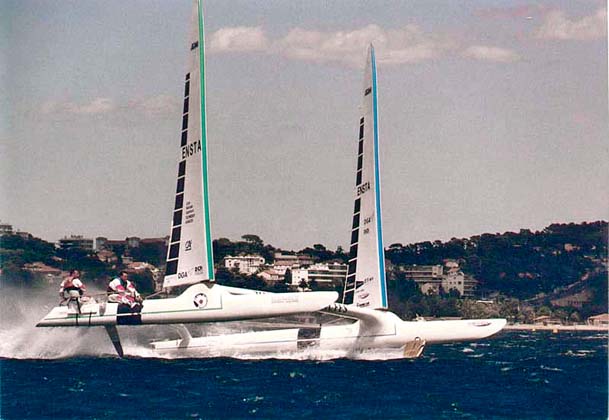
Techniques Avancées, a foilborne proa
1997 – Techniques Avancées , a French foilborne proa, set a new world speed record in the D class, at 42.12 knots
2005 – Rohan Veal wins the International Moth World Championship sailing a Moth class dinghy with hydrofoils fitted.

L’Hydroptère, former speed record holder. Photo: Christophe Launay
2009 – L’Hydroptère set new outright world speed record over 500m 51.36knots.

SailRocket2 clocked an unprecedented 64.45 knots
2012 – Sailrocket II broke L’Hydroptère ’s record to set new outright world record over 500m of 65.45knots.
2013 – The America’s Cup goes foiling as Oracle Team USA beat Emirates Team New Zealand both sailing foiling 72ft catamarans, the AC72s.

The G4 foiling catamaran
2015 – Gunboat launch the Gunboat G4, a foiling high performance cruising catamaran

IMOCA 60 Banque Populaire VIII, sailed by Armel Le Cléac’h wins the 2016/2017 Vendee Globe on a semi-foiling design
2016 – The Vendée Globe sees semi-foiling IMOCA 60 keelboats on the startline for the first time.
2017 – Emirates Team New Zealand win the America’s Cup in a foiling AC50 catamaran

Emirates Team New Zealand racing in the 2021 America’s Cup in Auckland, New Zealand. Photo: ACE / Studio Borlenghi
2021 – Emirates Team New Zealand defend the 2021 America’s Cup in a brand new foiling monohull, the AC75
If you enjoyed this….
Yachting World is the world’s leading magazine for bluewater cruisers and offshore sailors. Every month we have inspirational adventures and practical features to help you realise your sailing dreams. Build your knowledge with a subscription delivered to your door. See our latest offers and save at least 30% off the cover price.

Fresnel Hydrofoil Trimaran Sailboat
-Fresnel Hydrofoil Trimaran Sailboat, Solar Powered Yacht, Architecture Images
Fresnel Hydrofoil Trimaran Sailboat Design
Solar Powered Yacht for Holden Manz Wine Estate, Cape Town design by Dr Margot Krasojevic architect
14 Nov 2016
Fresnel Hydrofoil Trimaran Sailboat Images
Design: Dr Margot Krasojevic, architect
Location: Cape Town, South Africa
Fresnel Hydrofoil Trimaran Sailboat by Margot Krasojevic
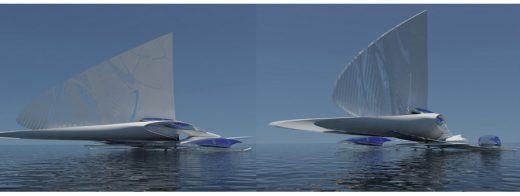
The design for a solar powered, perpetual motion, hydrofoil Trimaran yacht, commissioned by Holden Manz wine estate, Cape Town.
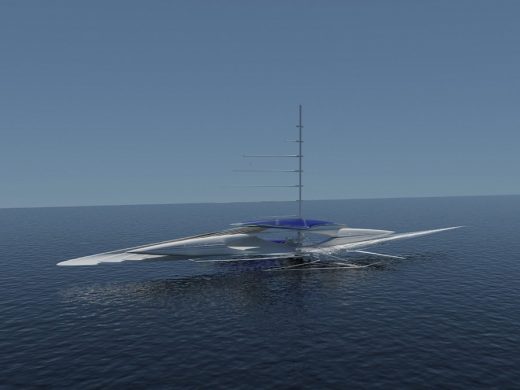
The Fresnel Trimaran Trimaran has a folding wingsail for a better lift to drag ratio, the sail’s frame is a built up mechanical structure similar to an airplane wing constructed from carbon fibre with a retractable Kevlar sail covered in aero-nautical film.
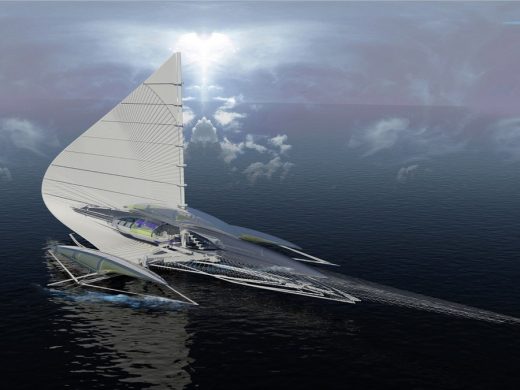
The sail rotates around the mast and has a series of motorised creases which catch the wind, the wingsail is actuated by motors that control these movements using solar cells and wind energy.
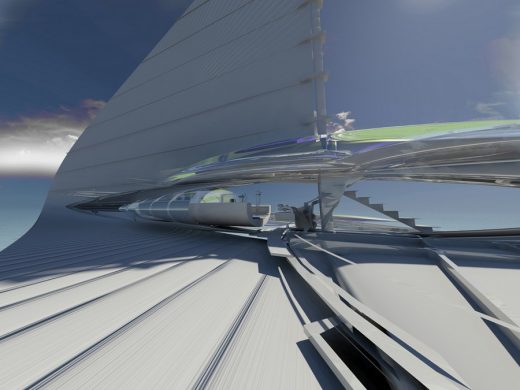
The combination of the Fresnel lens and holographic film clad outrigger concentrates solar power for more of an efficient output. The form of the main hull acts as one unit with the wingsail, which wraps into the main body of the hull creating a continuous surface resulting in the motorised mast changing the shape of the sail allowing it to harness more wind.
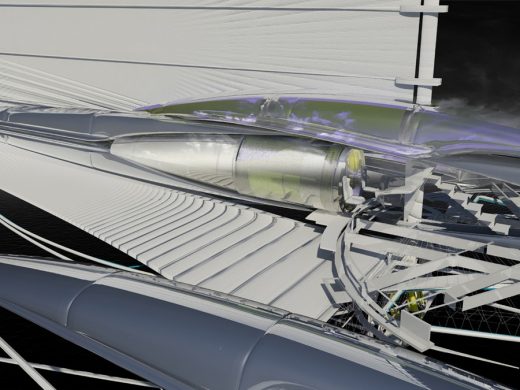
The outriggers detach to transform the yacht from racing multihull Trimaran to a cruise boat for leisure. The multi-hulls use recycled carbon fibre materials to reduce the environmental damage caused during processing new carbon fibre sheets.
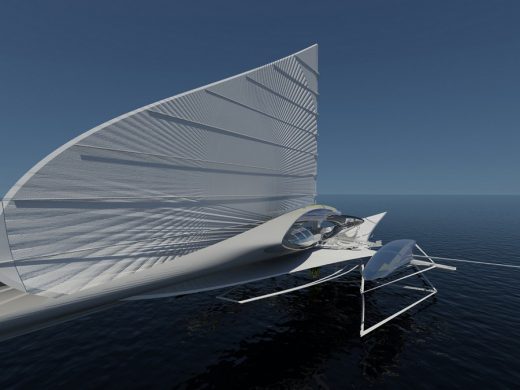
The multi-hull wingsail design does not carry a heavy ballast which slows down vessels, all the materials used are strong yet lightweight.
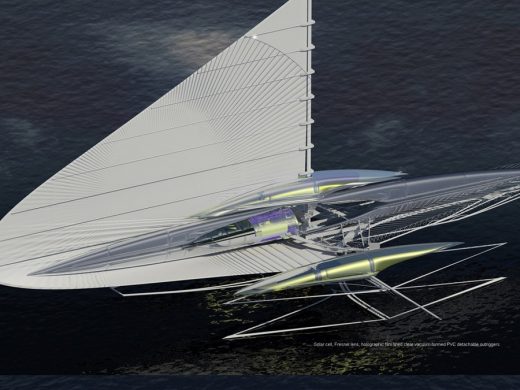
A triangulated woven polyester mesh trampoline with a vinyl coating runs the length of the Trimaran, it is connected to the wingsail which wraps itself into the main composite carbon fibre hull, the trampoline frame acts as a water piercer with a heavy ensuring a smoother ride. Wind flows over wingsail and uplift drives the Trimaran forward.
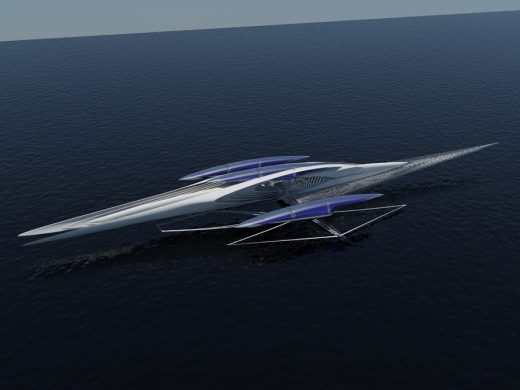
The Wingsail generates wind energy, internal gearing systems convert wind energy to electricity which can be used to part run the motors or contribute to the integrated desalination unit along with the solar cell/ fresnel clad outriggers which run the desalination unit providing up to 4 litres of drinking water per hour.
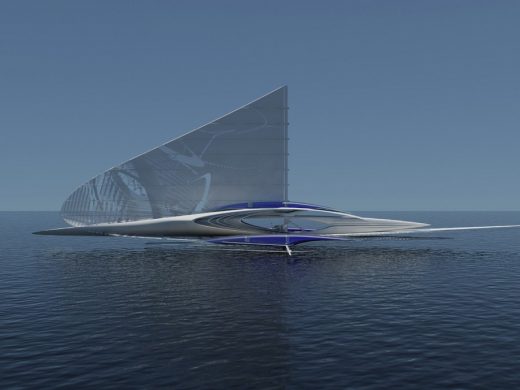
During bright windless days, wingsails face the sun and only solar energy is generated. On windy days, wingsails rotate to generate largest combined energy from wind and sun. At night, wingsails generate just wind energy.
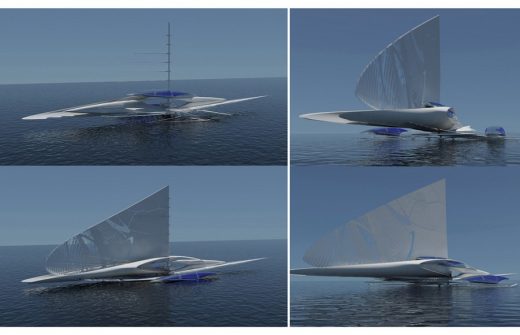
The outrigger hulls can detach themselves from the main hull, they are constructed from a double section vacuum bonded PVC surface lined with Fresnel lenses and holographic film to focus the light intensity towards the sandwiched solar cells.
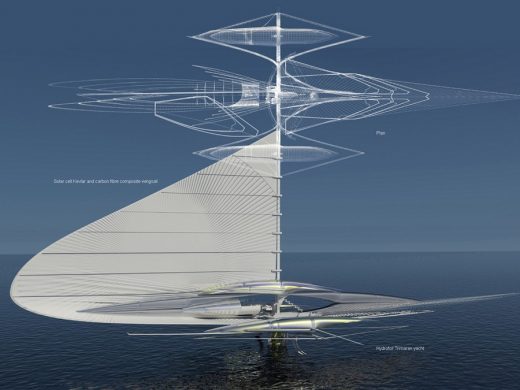
The Fresnel trimaran also has a set of fold-out hydrofoils. When it’s in monohull mode, these hydrofoils can be deployed, pushing the main hull up above the water, reducing water resistance by up to 80 percent, allowing for a fast, smooth ride that uses less fuel.
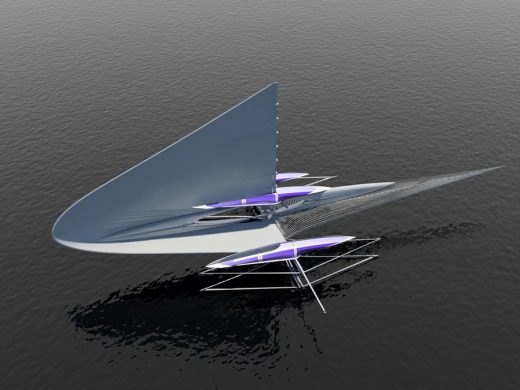
The main cabin is lined with holographic film which defracts incident light, it also acts as a prismatic concentrator which channels light towards the photovoltaic material.
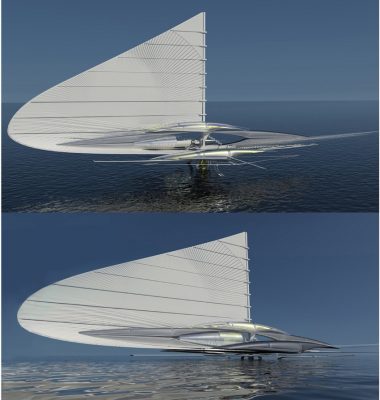
The second stage to the project involves a series of elliptical tracks running across the yacht’s boards attempting to harness the main hull pendulum motion to run the perpetual retrieving magnetic turbine motor.
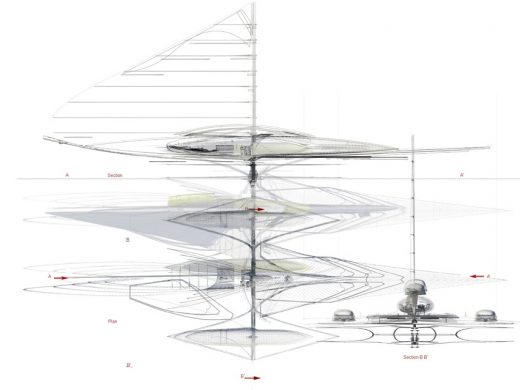
Fresnel Hydrofoil Trimaran Sailboat images / information from Dr Margot Krasojevic Architecture
Dr Margot Krasojevic
Address: Holden Manz Wine Estate, Green Valley Rd, Franschhoek, 7690, South Africa Phone: +27 21 876 2738
Dr Margot Krasojevic Design
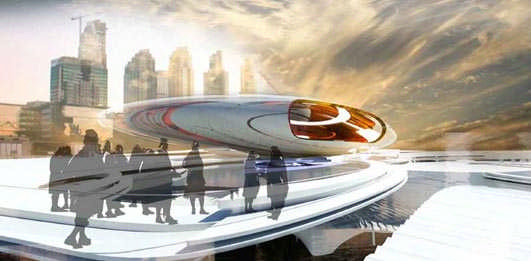
Dr Margot Krasojevic Book

Indian Ocean
Architectural Concept Designs

Comments / photos for the Fresnel Hydrofoil Trimaran Sailboat for Holden Manz Wine Estate, Cape Town design by Dr Margot Krasojevic architect page welcome
Website : Dr Margot Krasojevic

- AMERICA'S CUP
- CLASSIFIEDS
- NEWSLETTERS
- SUBMIT NEWS
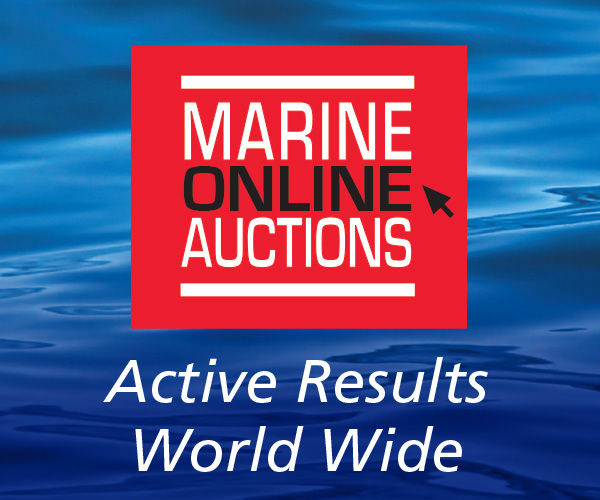
Hydrofoiling remote controlled sailing trimaran on test + Video
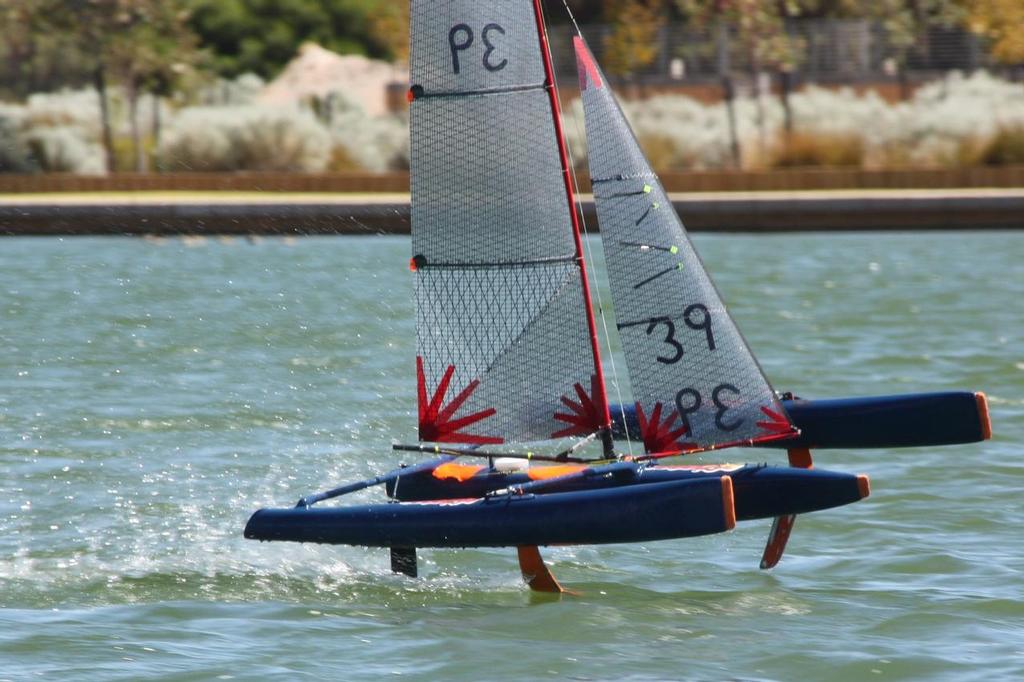

Related Articles
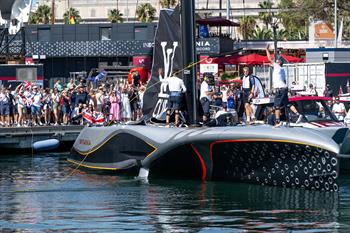
MOD 70 hydrofoils
Ultra-modern, lighter = better, craftsmanship, mod70 hydrofoils - design.
We produce the Mod70 hydrofoils for the trimarans in this fast, offshore sailing class. Teams Argo Racing and Beau Geste Racing already sail with uptip L-foils designed by Martin Fischer. In cooperation with Andrew MacPherson (Macca) two sets of foils have already been developed and shipped.
We build your new foiling boat!
Material & technology.
Basic material: the foils are made of carbon pre-preg. The Mod70 hydrofoil models are milled from the 3D-file and Autoclave-resistant carbon tooling is made. With our unique ‘one-shot’ production process, we manufacture all our continuous fiber foils under vacuum cured in our Autoclave.
The production method specially developed for this purpose creates a hydrofoil that cures in one go, without glue joints and including internal stiffening ribs. The result is a super-strong hydrofoil that is as light as possible.
The pre-cutting process of laminates is done by our automated pre-preg cutting machine of the brand Zünd . This process ensures excellent product quality and constant product weight.
For the Mod70 hydrofoils, the board up and down facilities in the foils are also fitted.
CHARACTERISTICS MOD70 HYDROFOILS
Length: 3.40 m Foil-tip-length: 1.35 m Width: 0.56 m
The above specifications refer to the daggerboard foils.
Schrijf je in voor onze nieuwsbrief en blijf op de hoogte van de nieuwste ontwikkelingen!
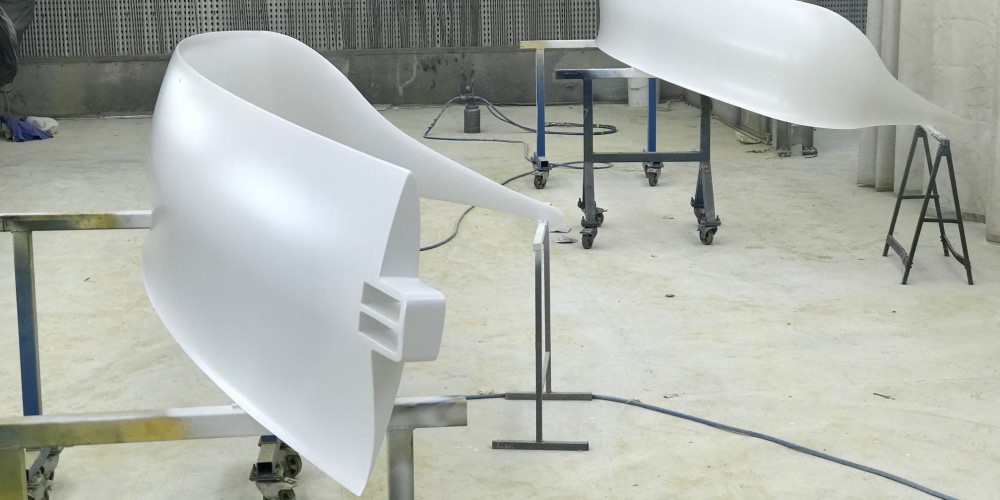
Contactformulier
- Company Name
- Full name * First Last
- Emailaddress *
- Phonenumber *
- Mijn vraag betreft * My question: TF10 F1x G4 F4 Custom Parts Hydrofoils Other
- Name This field is for validation purposes and should be left unchanged.
Registrieren Sie sich für unseren Newsletter
lassen Sie sich über die neuesten Entwicklungen informieren!
- E-Mail-Adresse *
- Phone This field is for validation purposes and should be left unchanged.
Schrijf je in voor onze nieuwsbrief
blijf op de hoogte van de nieuwste ontwikkelingen!
- First name *
- Last name *
- Email This field is for validation purposes and should be left unchanged.
Wij gebruiken cookies om u de beste online ervaring te bieden. Door akkoord te gaan, accepteert u het gebruik van cookies in overeenstemming met ons cookiebeleid.
Wanneer u een website bezoekt, kan deze informatie in uw browser opslaan of ophalen, meestal in de vorm van cookies. Beheer hier uw persoonlijke cookiediensten.
- wordpress_test_cookie
- wordpress_logged_in_
- wordpress_sec

COMMENTS
The TF10 is an 11 m long one-design foiling trimaran, designed by the famous yacht designers Morrelli & Melvin. The TF10 is built and sold by DNA Performance Sailing. The TF10 is suitable for a crew of 4-5 persons and can handle a wide range of sailing conditions. The construction consists of pre-preg carbon fibers with a Nomex honeycomb core.
Glen Roberts selfmade Hydrofoil trimaran, 15 year project, test run 2012Description, Epoxy glass, plascore skin construction. Dimension 26ftx31ft with 3 T fo...
The magic of hydrofoil sailboats lies in their extraordinary speed. They can achieve remarkable speeds that were once thought impossible for sailboats. ... from the foiling catamarans that have revolutionized the America's Cup to the twin sail trimaran designs. The fastest production sailboat, the Hobie Trifoiler, showcases what hydrofoils are ...
Foiling trimarans demonstrating the advantages of using self levelling incidence controlled hydrofoils in a series of test sails on Pittwater in Sydney
The Eagle Class 53's roots lie firmly with the foiling America's Cup catamarans. Even in displacement mode she's an exhilarating ride. The goal is to achieve fully foiling performance. It is ...
To counter this and keep the boat sailing more upright, multihull designer Dick Newick first employed slanted asymmetrical hydrofoils in the outer hulls of his small charter trimaran, Lark, in 1962. A portion of the lift developed by the hydrofoil resisted leeway, while a portion worked to actually lift the leeward hull, keeping the boat more ...
Foiling 101. The F101 takes you through your foiling journey, providing a progression pathway from the beginner foiler to the Olympian. F101 sets new challenges and goals at whatever level you come in, from expert to beginner. The F101 is an all-new foiling trimaran aimed specifically at those sailors that, for whatever reason, thought foiling ...
Before turning over the F101 to the Boat of the Year judges, foiling coach Rob Andrews demonstrates the ease with which the 17-foot, 180-pound trimaran foiler establishes and maintains flight.
The Windrider Rave is a production rotomolded hydrofoil trimaran. It was designed by Dr. Sam Bradfield who previously held speed records with nf 2 (neither fish nor fowl). Last update: February 2008
The TF10 hydrofoils are daggerboards in a so-called Z-shape. The rudders are foils with a T-lifting surface. The TF10 is a 4-point foiling boat. This configuration ensures that you always sail with all four foils down. This 4-point line-design has its origin in the DNA F1x. DNA was the first to find a solution to get the A-class upon the foils ...
Updated on August 31, 2017. Penned down by London-based architect Margot Krasojević, the Fresnel Hydrofoil Trimaran looks like a mesmerizing sailboat of the future, with an astonishing shape and a unique electric propulsion system that's years beyond the diesel/electric hybrid engines used on the most amazing hybrid yachts nowadays.
Jul 22, 2024. Original: Nov 30, 2018. With the TF10, big-boat multihull foiling is now available to amateurs as well as pros. Any time I put a helmet on I become hyper-aware of every step I take. Precaution means there's an alternative to a happy ending. On one of my last rides of the 2018 summer season, the helmet was mandatory, as was the ...
Custom parts & hydrofoils DNA performance Sailing is the leading supplier of hydrofoils and will help you with tailor-made solutions for your carbon custom parts. TF10 Foiling Trimaran. The Morrelli & Melvin designed TF10 is a safe and easy to sail foiling trimaran F1x A-CAT Foiling Catamaran ...
The TriFoiler is a hydrofoil trimaran sailboat that began as a small model back in 1981. The project culminated with production of the Hobie TriFoiler, manufactured in 1995 by the Hobie Cat Company in Oceanside, California. This story describes the boat and the history of the project. The idea began with the desire to break the world speed ...
January 18, 2023. The foiling revolution is taking hold—and is coming to far more than just sailing yachts these days. Kevin Rio/69F Media. There's a revolution underway in the sport of sailing, and it can be summed up in one simple word: foiling. More specifically, we're talking about hydrofoils, the winglike appendages mounted beneath ...
Our Mini40 trimaran "Secrets" having a good foiling session. Still refinements to make on the foils but we are heading in the right direction. Some onboard...
A sailing hydrofoil, hydrofoil sailboat, or hydrosail is a sailboat with wing-like foils mounted under the hull. ... In the 1990s the Hobie Cat company manufactured the TriFoiler (no longer in production), a twin-sail trimaran with a mainsail on each outrigger capable of 35+ knot speeds in typical sailing conditions, ...
Hydroptère is a French experimental sailing hydrofoil trimaran imagined by the yachtman Éric Tabarly.The Hydroptère project was managed by Alain Thébault, the design done by naval architects VPLP design [1] and the manufacturing by a group of French high-tech companies. Its multihull hydrofoil design allows the sail-powered vessel to reach high speeds on water.
DNA Performance Sailing builds foiling multihulls. Our boats: F1x A-class catamaran and the TF10 foiling trimaran. Discover the sailing of tomorrow. De Serpeling 10, 8219 PZ Lelystad +31 (0)320 28 18 77 ... > TF10 FOILING TRIMARAN > HYDROFOIL MANUFACTURER > CUSTOM PARTS > CONTACT. OUR OFFICE De Serpeling 10, 8219 PZ Lelystad Netherlands +31 320 ...
1869 - First patent for hydrofoil was for a rowing boat, ... 1990 - Hobie Trifoiler, a twin-sail trimaran with a mainsail on each outrigger, capable of 30 knots, ...
Fresnel Hydrofoil Trimaran Sailboat by Margot Krasojevic. The design for a solar powered, perpetual motion, hydrofoil Trimaran yacht, commissioned by Holden Manz wine estate, Cape Town. The Fresnel Trimaran Trimaran has a folding wingsail for a better lift to drag ratio, the sail's frame is a built up mechanical structure similar to an ...
There was a good breeze at Austin Lakes, Mandurah, for test-sailing a Mini40 RC trimaran, using all four rigs, although too windy for the number one rig. Designer Ian Holt describes the remote controlled foiler's performance: The boat foiled upwind a few times but, will make changes to the foils before I sail the boat again.
Trimaran - Wikipedia ... Trimaran
The Mod70 hydrofoil models are milled from the 3D-file and Autoclave-resistant carbon tooling is made. With our unique 'one-shot' production process, we manufacture all our continuous fiber foils under vacuum cured in our Autoclave. The production method specially developed for this purpose creates a hydrofoil that cures in one go, without ...